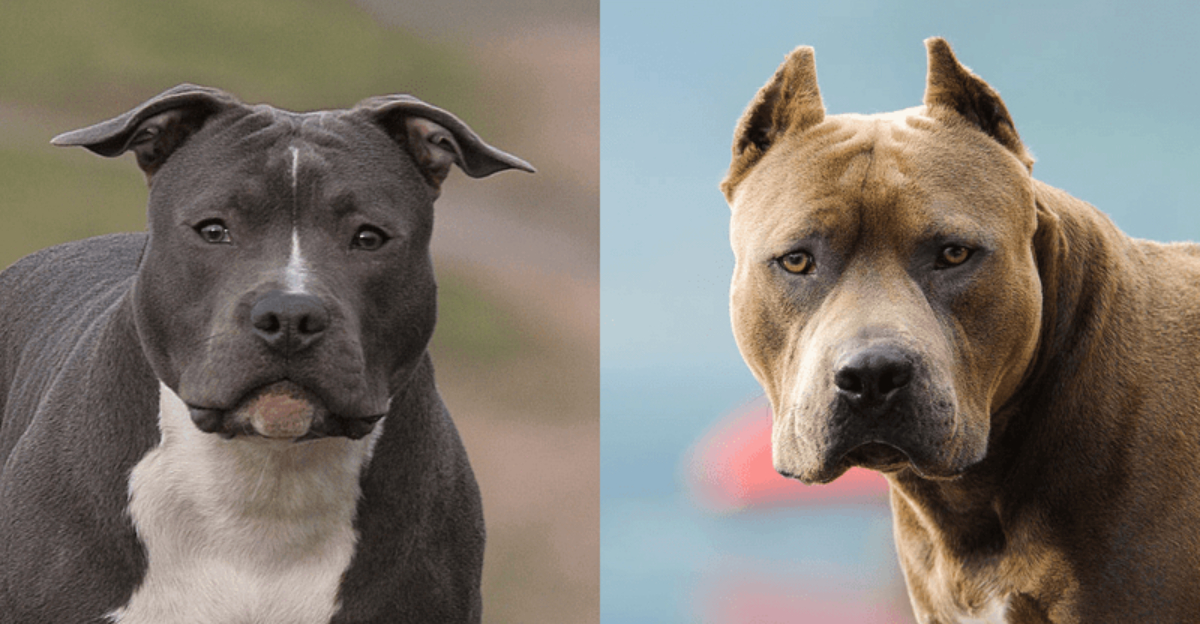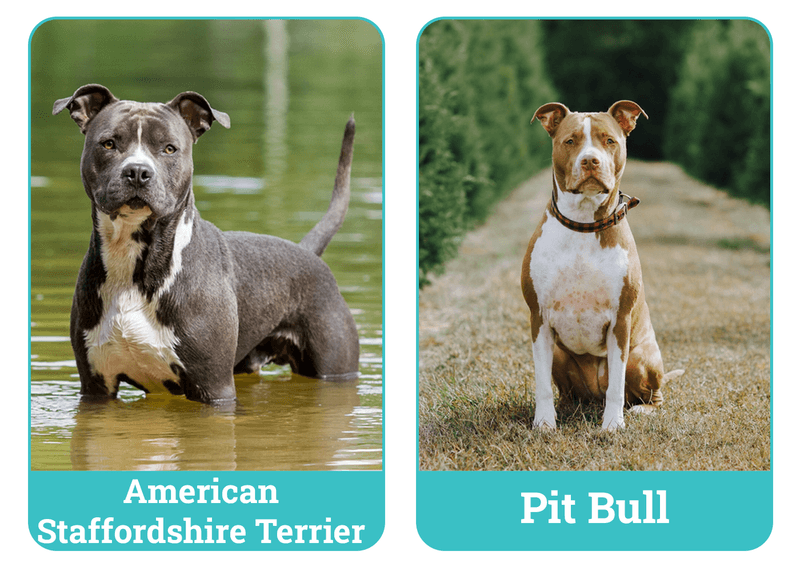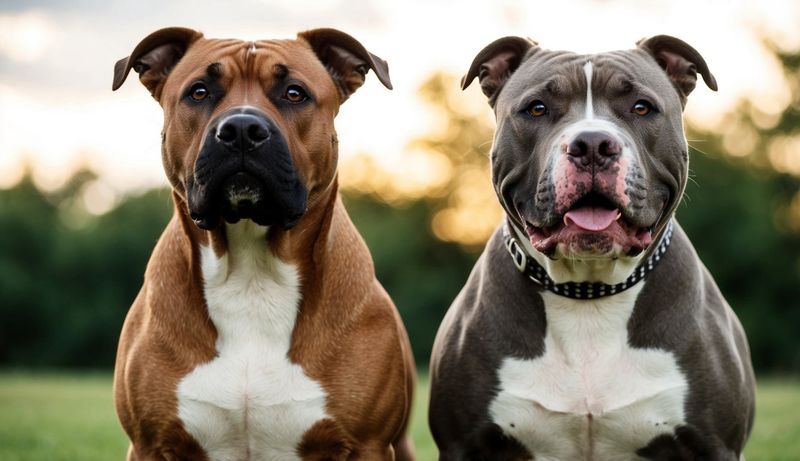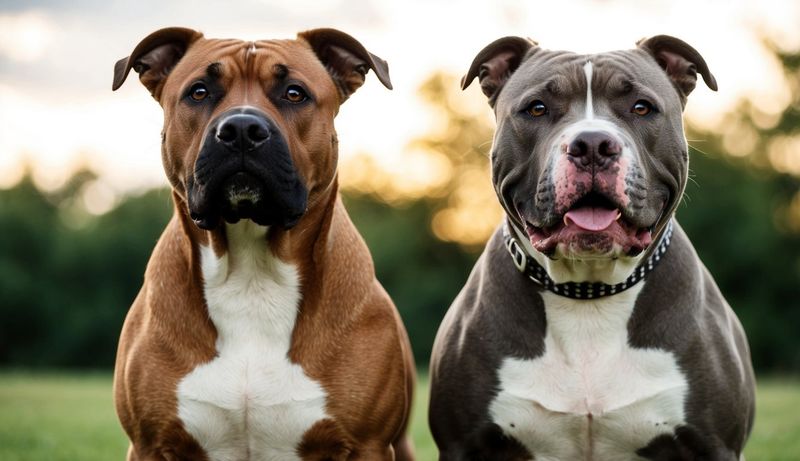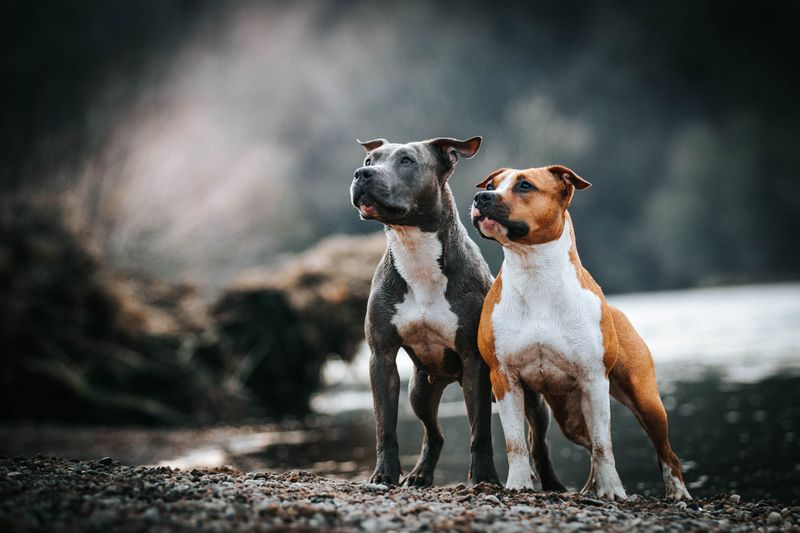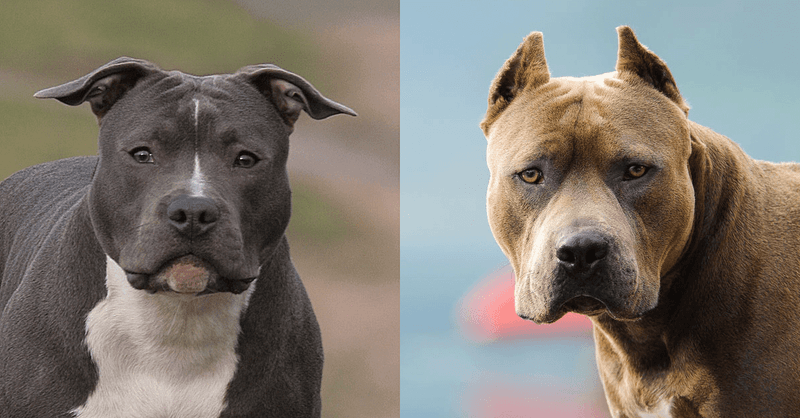American Staffordshire Terriers and American Pitbull Terriers are often confused due to their similar appearances. However, these breeds have distinct characteristics that set them apart. In this article, we explore ten key differences between the two, shedding light on their unique traits, histories, and roles.
History and Origin
American Staffordshire Terriers hail from the Staffordshire region of England, where they were initially bred for bull-baiting. Their lineage traces back to a mix of bulldogs and terriers. Over time, they evolved into a more companionable breed, known for their loyalty and gentleness. American Pitbull Terriers, on the other hand, have a more storied past. Originating in the United States, they were bred for pit fighting, hence the name. Their history is intertwined with working and fighting roles, which have shaped their strong yet affectionate nature. These distinct origins influence each breed’s characteristics today.
Physical Appearance
The American Staffordshire Terrier is noted for its muscular build and broad head, giving it a strong yet friendly appearance. Their eyes are round, and their ears are often cropped, adding to their alert demeanor. In contrast, the American Pitbull Terrier is slightly leaner, with a more athletic physique. Their ears are typically uncropped, and their eyes can appear more deep-set. While both breeds exude strength, the Pitbull’s agility is more pronounced. These physical distinctions can often aid in identifying each breed at a glance.
Temperament
American Staffordshire Terriers are known for their affectionate and sociable nature. They’re often described as people-oriented, forming strong bonds with family members and being particularly good with children. American Pitbull Terriers are equally affectionate but exhibit a more protective streak. This breed’s loyalty is unmatched, often forming a deep connection with a specific individual. Both breeds are gentle and loving in their own ways, but the Pitbull’s protective nature may make it more suitable for experienced dog owners.
Training and Intelligence
When it comes to training, both breeds exhibit high intelligence and eagerness to please. American Staffordshire Terriers are quick learners, responding well to positive reinforcement techniques. Their patience makes them excellent candidates for training. American Pitbull Terriers are equally intelligent but may require a more experienced hand. Their determination and energy levels can be harnessed positively with consistent training. Understanding each breed’s learning style can lead to rewarding training experiences, fostering a strong bond between dog and owner.
Exercise Needs
Exercise is crucial for both breeds, but their needs vary. American Staffordshire Terriers enjoy moderate exercise, often content with daily walks and playtime. Their adaptable nature makes them suitable for apartment living if exercised adequately. American Pitbull Terriers, with their boundless energy, thrive on more vigorous activities. They excel in agility sports and require regular mental stimulation to stay happy and healthy. Meeting these exercise needs is key to ensuring a well-balanced and content canine companion.
Health and Lifespan
American Staffordshire Terriers generally enjoy a robust health profile, living an average lifespan of 12 to 16 years. Common health issues include hip dysplasia and skin allergies, which can be managed with regular vet visits. American Pitbull Terriers also have a similar lifespan, typically ranging from 12 to 14 years. They are prone to conditions like hip dysplasia as well, alongside heart disease. Being proactive about health checks can ensure these breeds lead long, healthy lives, enjoying every moment with their owners.
Socialization Requirements
Socialization is pivotal for both breeds, starting from a young age. American Staffordshire Terriers are naturally friendly but benefit from early socialization to nurture their gentle nature around other animals and people. American Pitbull Terriers, with their strong personalities, require consistent socialization to prevent any behavioral issues. Exposure to various environments helps them develop into well-rounded adult dogs. Engaging in puppy classes and regular social outings can ensure balanced temperament in both breeds, making them delightful companions.
Popularity and Perception
While both breeds are loved by their owners, they often face public misconceptions. American Staffordshire Terriers enjoy a favorable reputation as affectionate family pets, often featured in media as loving companions. American Pitbull Terriers can face stigma due to their history, but responsible ownership and advocacy are changing perceptions. Education about their true nature helps in gaining the respect they deserve. Recognizing the unique qualities of each breed helps combat stereotypes and promotes responsible pet ownership.
Registrations and Recognition
American Staffordshire Terriers are recognized by major kennel clubs like the AKC, which highlights their standardized breed traits. This recognition aids in maintaining breed standards. The American Pitbull Terrier, while popular, is not recognized by the AKC. Instead, organizations like the UKC acknowledge them, focusing on performance traits over traditional standards. Understanding these registration differences helps prospective owners choose the breed that aligns with their preferences and lifestyle.
Legal Restrictions
Some regions impose breed-specific legislation, affecting both American Staffordshire Terriers and American Pitbull Terriers. These laws can restrict ownership or impose special requirements, often based on misconceptions. American Staffordshire Terriers may face fewer restrictions due to their peaceable reputation. In contrast, American Pitbull Terriers often encounter more stringent regulations, requiring advocacy and responsible ownership. Awareness of local laws is crucial for potential owners, ensuring compliance and fostering better understanding between breeds and communities.
